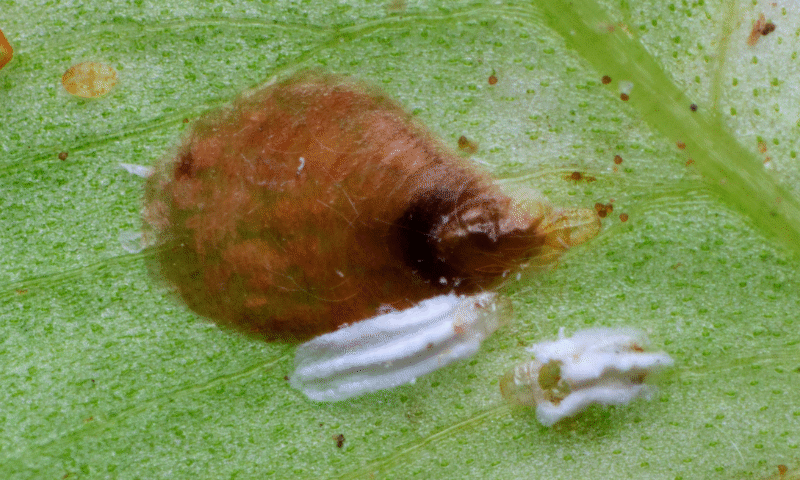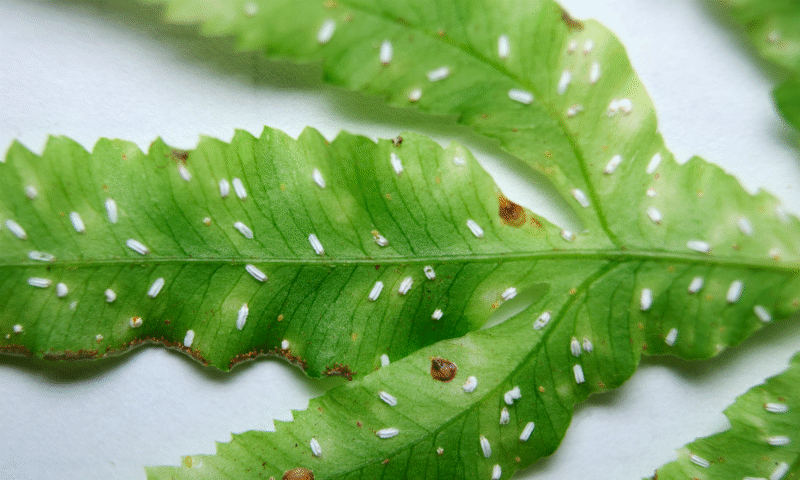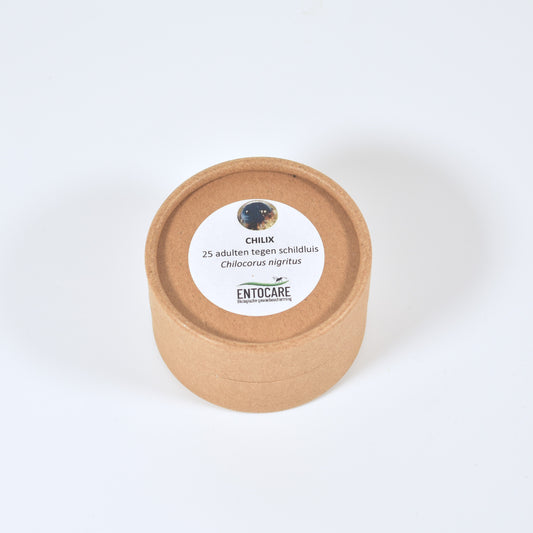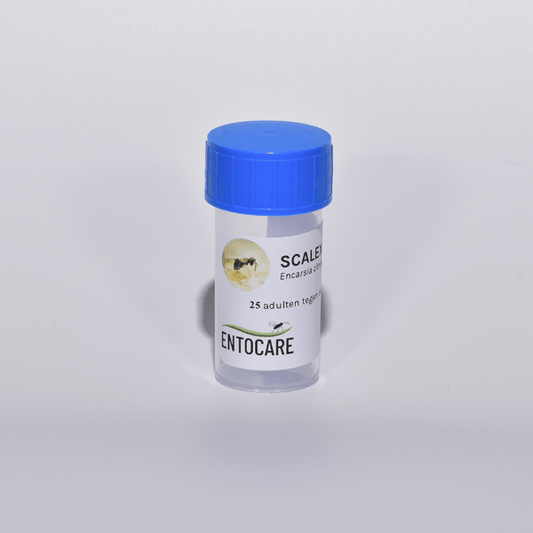
How to recognize fern scale
Female fern scales have a translucent brown, mussel-shaped scale of approximately 2 mm. Male fern scales differ greatly in appearance from females. Their scale, which actually serves as a cocoon,is elongated, white and has three length ridges. The cocoon of the male is much smaller than the female scales. Male scales emerge from their cocoon as small winged creatures that will search for females to mate. Eggs develop inside the females’ body. Once they hatch, the first stage (crawlers) will emerge from underneath the mothers scale and will search for a suitable settling point close by. They will remain on this spot for the rest of their lives. Fern scales are usually found in groups. Two common fern scales in the Netherlands are the closely related P. strachaniand P. buxi.
Fern scale damage and distribution
Fern scales are usually found locally in large numbers on the underside of the leaves. The upperside of leaves usually shows yellow spots. Sometimes leaves of leaf tips show deformations. During heavy infestations, leaves and even entire plants can be sucked dry and die.
Products against fern scale
-
CHILOCORUS NIGRITUS - 25
Vendor:Entocare eigen kweekRegular price €42,40 EURRegular priceUnit price / per -
CHILOCORUS NIGRITUS - 100
-
ENCARSIA CITRINA - 25
-
ENCARSIA CITRINA - 100
-
Life cycle fern scale
50 - 100 eggs per female
egg to adult in 30 - 45 days
female lifespan 2-3 months
adult males live several hours -
Host plants fern scale
especially on ferns
Dracaena
Cordyline
citrus
-

Fern scale close-up
-

Fern scale






